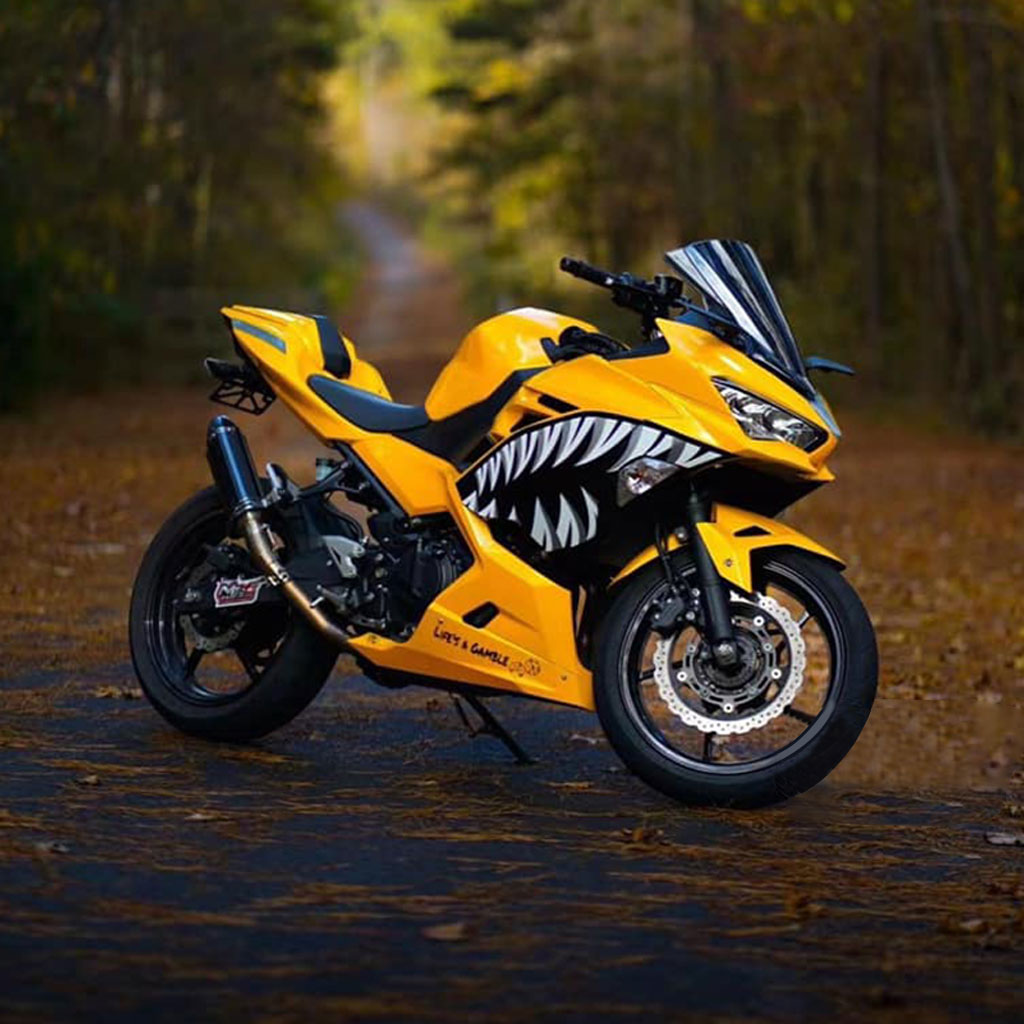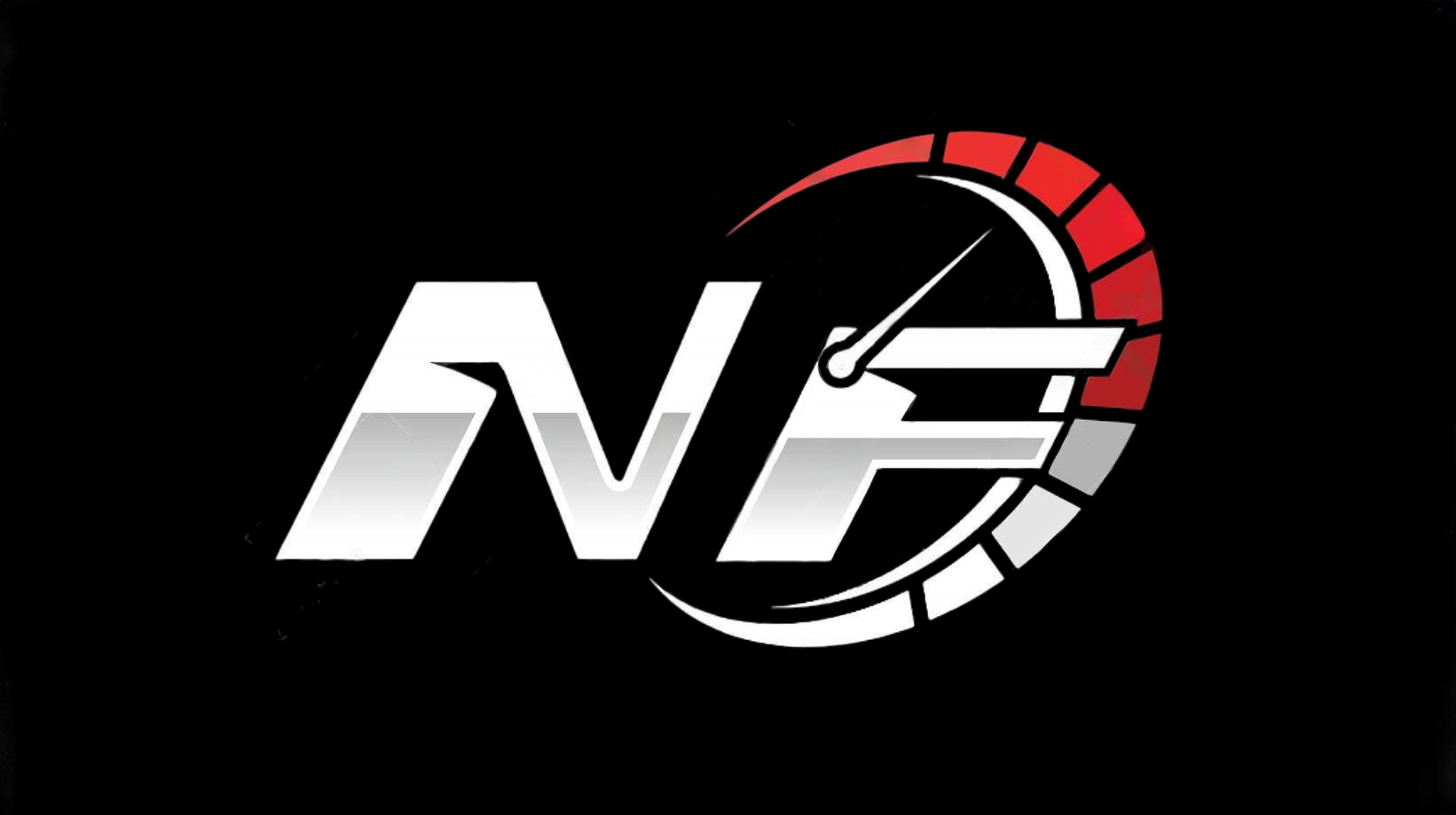Motorcycle Fairings: Everything You Need to Know Before Ordering
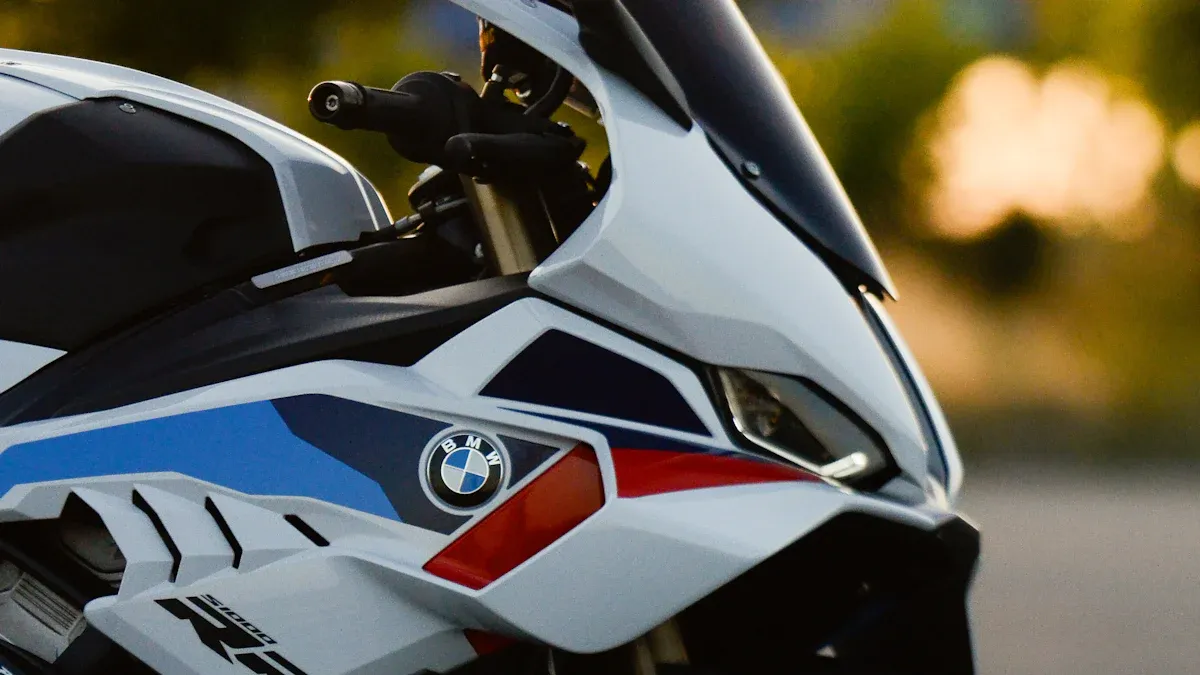
When you buy motorcycle fairings, you must check fitment, material, and color. Standards like ACES and PIES help suppliers match size, color, and material. This stops problems when you install and keeps your motorcycle looking good. Picking the right fairing material makes it strong and safe. Some materials have UV resistance and a good surface finish. Many riders like pre-drilled fairings and full kits. These make putting them on easier and keep the bike looking the same. Always look at the supplier’s reputation before you buy.
Key Takeaways
Pick the fairing type that fits how you ride. Full fairings block wind the best. Smaller fairings are lighter and look cool.
Choose fairing materials with care. ABS plastic is strong and not too pricey. Fiberglass is good for custom jobs. Carbon fiber works best but costs more.
Always check if the fairing fits your bike. Match the year, make, and model. This helps you avoid problems and keeps your bike looking neat.
Try to get pre-drilled fairings and full kits. These save time when you install them. They also fit well and have matching colors.
Look up sellers and read what others say. Pick brands people trust and that help after you buy. This keeps your bike safe and makes riding fun.
Motorcycle Fairings Overview
What Are Motorcycle Fairings
You see motorcycle fairings on many bikes. These are panels that cover parts of your motorcycle. They often fit around the frame, engine, and front area. A motorcycle fairing can change how your bike looks and feels. You can find fairings made from ABS plastic, fiberglass, or carbon fiber. Each material gives different levels of strength and weight. Some fairings come in full kits, while others only cover certain parts.
Fairings do more than just look good. They help shape the airflow around your motorcycle. This design can make your ride smoother and more stable. You also get some protection from wind, rain, and road debris. Many riders choose motorcycle fairings to improve both style and function.
Why Use Motorcycle Fairings
You gain many benefits when you add fairings to your bike. Here are some reasons why riders choose them:
Fairings reduce drag by shaping the air that moves around your motorcycle. This can increase your top speed by up to 10%.
You use less fuel because the engine does not have to work as hard against the wind. This means better fuel economy and smoother acceleration.
Fairings protect you from wind, rain, and flying debris. You feel less tired on long rides because the wind does not hit you as hard.
You get better handling and stability at high speeds. The fairing cuts down on turbulence and keeps your bike steady.
Different materials, like ABS plastic and carbon fiber, change the weight and strength of the fairing. Lighter fairings can help you go faster, while stronger ones give more protection.
Note: Riders often report that motorcycle fairings make long trips more comfortable. You stay safer and enjoy more control, even in windy weather.
The advantages of fairings go beyond looks. You get real performance gains and extra safety. Many riders say that fairings help them ride longer and feel better on the road.
Types of Motorcycle Fairings
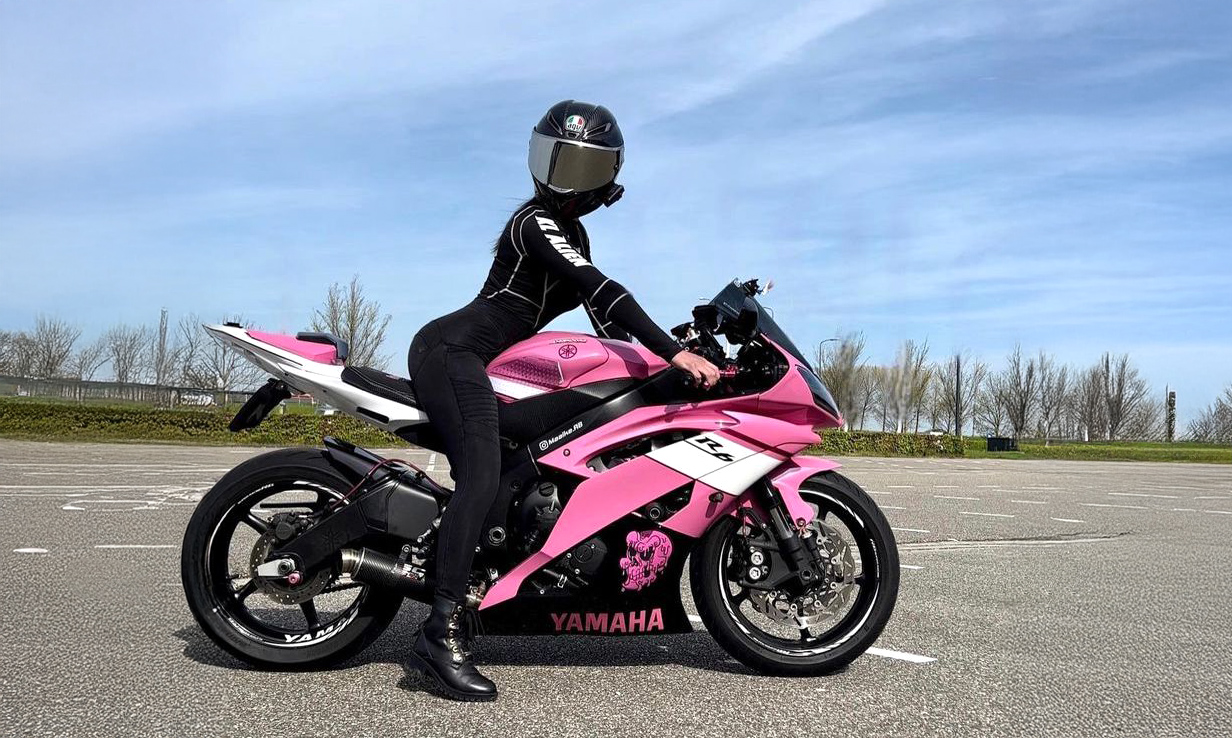
When you look at different types of motorcycle fairings, you see how each one changes your ride. The right fairing can give you better wind protection, improved comfort, and a new look for your bike. You also get enhanced aerodynamics, which helps with speed and fuel efficiency. Here is a closer look at the main types of motorcycle fairings:
Full Fairings
Full fairings cover most of your motorcycle’s front and sides. You often see these on sport bikes and touring bikes. Full fairings give you the best wind protection. They also help with aerodynamics by reducing drag. This means you use less fuel and feel less tired on long rides. Full motorcycle fairings can change your bike’s style and make it look more modern. Many riders choose full fairings for highway use because they offer the most coverage and protection.
Half Fairings
Half fairings cover the upper part of your bike, usually around the headlight and handlebars. You get good wind protection for your chest and arms. Half fairings also improve aerodynamics, but not as much as full fairings. They weigh less and cost less. You might like half fairings if you want some protection but still want to see more of your bike’s frame.
Quarter and Bikini Fairings
Quarter fairings and bikini fairings are small. They only cover the area around the headlight. These fairings give you basic wind protection and a sporty look. They do not change aerodynamics much, but they are light and easy to install. Many riders pick these for city riding or short trips.
Naked Fairings
Naked fairings are very minimal. Some bikes have no fairing at all. You get almost no wind protection, but you see the bike’s engine and frame. Naked bikes look simple and classic. You might choose this style if you want a lighter bike and do not need extra aerodynamics.
Note: Fairings work best for highway use. They can change your bike’s style and give you real benefits like better wind protection and improved comfort.
Fairing Type | Wind Protection | Aerodynamics | Weight | Cost |
|---|---|---|---|---|
Best | High | Heaviest | Highest | |
Half Fairing | Good | Medium | Medium | Medium |
Quarter/Bikini | Basic | Low | Lightest | Lowest |
Naked | None | None | Lightest | Lowest |
Fairing Kits and Fitment
Motorcycle Fairings Kit Options
When you look for a motorcycle fairings kit, you find many choices. Some kits cover the whole bike, while others only replace a few panels. A full fairing kit set gives you all the main pieces you need for your motorcycle. This option helps you keep the color and lines the same across your bike. You do not have to worry about mismatched parts or shades. Many riders choose a full kit because it saves time and gives a clean, factory look.
You can also find smaller fairing kits. These sets might only include the front or side panels. If you only need to replace a damaged part, a small kit works well. However, mixing old and new fairings can lead to color differences. You might notice the lines do not match up. For the best results, order a complete motorcycle fairings kit. This way, you get a fairing kit set that fits together and looks right.
Tip: Always check what comes in the fairing kit set before you buy. Some kits include bolts and hardware, while others do not.
Fitment and Compatibility
Getting the right fit is very important when you buy a new fairing. Each motorcycle model has its own shape and size. If you pick the wrong kit, the panels will not line up. This makes installation hard and can leave gaps. You want your motorcycle fairings to fit like the original parts. Good fitment keeps your bike safe and looking sharp.
Before you order, check your bike’s year, make, and model. Many websites let you enter this information to find the right fairing kits. If you choose an aftermarket fairing, you must be extra careful. Some aftermarket kits do not match the original holes or lines. This can cause problems when fitting a motorcycle fairing. You might need to drill new holes or trim the panels. To avoid these issues, buy from a trusted supplier like Nicefairings. They design their fairing kit set to match your bike exactly.
Note: A fairing that fits well will not rattle or move when you ride. Poor fitment can lead to noise and even damage over time.
Pre-Drilled Fairings
Pre-drilled fairings make installation much easier. These fairings come with all the mounting holes already in place. You do not need to measure or guess where to drill. This saves you time and lowers the risk of mistakes. When you buy a new fairing kit set, look for pre-drilled options. Most high-quality fairing kits include this feature.
If you buy an aftermarket kit that is not pre-drilled, you may face extra work. Drilling holes yourself can be tricky. You might crack the panel or miss the right spot. Pre-drilled fairings help you get a perfect fit and a smooth finish. You also spend less time in the garage and more time riding.
Reminder: Always test-fit your new fairing before you tighten all the bolts. This helps you spot any issues early.
Choosing the right motorcycle fairings kit and making sure it fits your bike will give you the best results. You get a bike that looks great and performs well. Trusted suppliers like Nicefairings offer fairing kits that are easy to install and built to last.
Fairing Materials
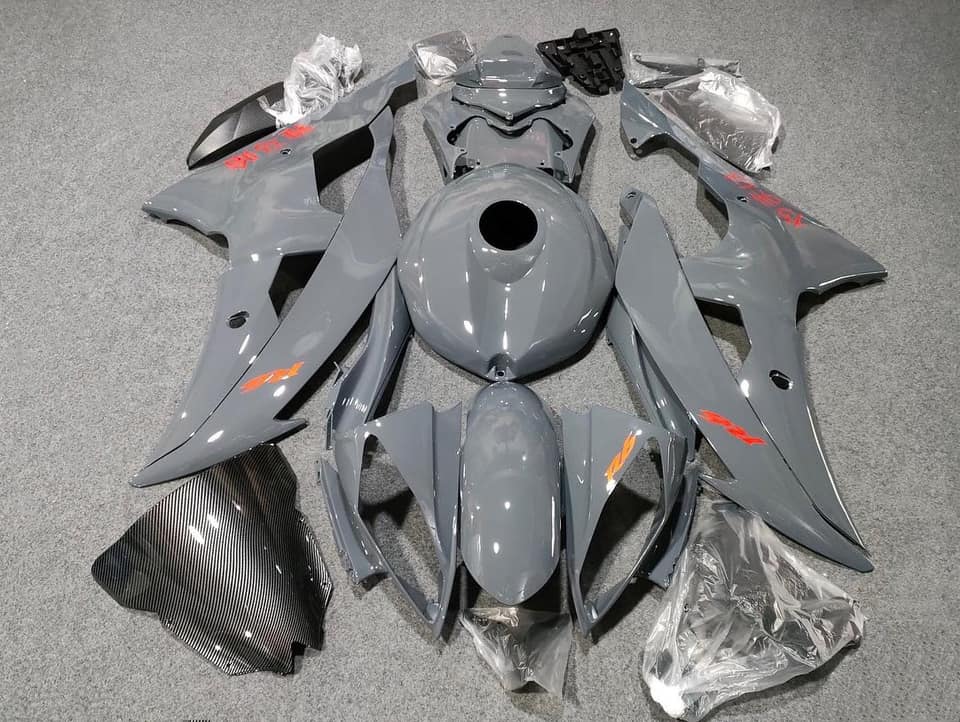
Choosing the right material for your fairing can make a big difference in how your motorcycle looks and performs. Each material has its own strengths and weaknesses. You should know what each type offers before you decide.
ABS Plastic
ABS plastic is the most common material for OEM-grade fairings. You see this material on many new motorcycles. It feels strong and flexible at the same time. ABS plastic resists cracking if you drop your bike or hit something on the road. You can paint it easily, so you get many color options. Most factory fairings use ABS plastic because it gives a good balance of weight, cost, and durability.
Tip: If you want a fairing that matches the original look and feel of your bike, choose ABS plastic. It works well for daily riding and gives you reliable protection.
Fiberglass
Fiberglass fairings offer a different set of benefits. This material feels lightweight but still strong. You can repair fiberglass if it cracks, which makes it a good choice for racers or riders who want to customize their bikes. Fiberglass absorbs paint well, so you can create custom designs. However, it does not flex as much as ABS plastic. If you drop your bike, fiberglass may crack more easily.
You often see fiberglass used in racing because it is easy to shape and fix. If you want to try new styles or need a fairing for track days, fiberglass could be a smart pick.
Carbon Fiber
Carbon fiber stands out as the lightest and strongest option. This material gives your motorcycle a high-tech look. Carbon fiber fairings weigh much less than other types. You get better performance because your bike feels lighter and faster. Carbon fiber also resists damage from the sun and weather.
However, carbon fiber costs more than ABS plastic or fiberglass. You pay for the strength and the cool appearance. Many riders choose carbon fiber for racing or for a custom, premium look.
Note: Carbon fiber fairings can boost your bike’s performance, but you should check if the extra cost fits your budget.
Material Comparison
You should compare the main features of each material before you order your next fairing. Here is a simple table to help you decide:
Material | Durability | Weight | Cost | Repairability | Common Use |
|---|---|---|---|---|---|
ABS Plastic | High | Medium | Moderate | Moderate | OEM, daily riding |
Fiberglass | Medium | Light | Low | Easy | Racing, custom |
Carbon Fiber | Very High | Very Low | High | Hard | Racing, premium |
ABS plastic gives you the best mix of strength and price. You see it in most motorcycle plastics from the factory.
Fiberglass lets you fix and paint your fairing easily. It works well for custom projects.
Carbon fiber offers the best performance and the lowest weight. You get a fairing that looks great and feels fast.
Remember: The right material depends on how you ride and what you want from your motorcycle. Think about your budget, your style, and your need for protection.
Color and Style
Color Matching
When you pick a new fairing, you want the color to match your fuel tank and other parts. If the colors do not match, your motorcycle might look strange or unfinished. A perfect color match makes your bike look neat and professional. Many riders care about their motorcycle’s look because it shows their style. People notice color and shape first when they see a motorcycle. Bright colors can help your bike stand out. Some riders like classic colors for a simple look. Others pick bold colors to show their personality. Try different colors with your bike to see what looks best. Always check color samples or ask for pictures before you buy a fairing.
Tip: If your fairing matches your fuel tank, your bike will have a smooth, factory look that many people like.
Customization
You can make your motorcycle special by customizing your fairing. Many suppliers let you choose custom paint, graphics, or finishes. You might want racing stripes, special logos, or a matte or shiny finish. Customizing your fairing lets you show your personality. It also makes your bike different from others. More riders want their motorcycles to show who they are. Adding custom touches to your fairing can make you feel proud of your bike. You can even use computer tools to see what your fairing will look like before you buy.
Custom paint jobs
Special graphics or decals
Matte, shiny, or metallic finishes
A custom fairing can make you feel more confident and help your motorcycle show your style.
Price and Value
Budget Considerations
When you shop for the best motorcycle fairings, you notice prices can change a lot. The material makes a big difference. Carbon fiber costs more than ABS plastic or fiberglass. Some brands use eco-friendly materials, which can also raise the price. You might see fairings made from recycled plastics or bio-composites. These options help the environment but often cost more because of new technology.
Brand reputation matters, too. OEM fairings from big names like Honda or Yamaha usually cost more. These brands offer quality and a good warranty. Aftermarket fairings cost less, sometimes 20% to 50% lower. You save money, but you need to check if the fit and finish meet your needs.
Tip: Set a budget before you start shopping. Decide what features matter most to you, such as material, color, or warranty.
Best Motorcycle Fairings for Value
You want the best motorcycle fairings for your money. Look at the kit type first. Full kits cost more but give you a matching look and easy installation. Some riders choose smaller kits to save money, but mixing old and new parts can lead to color or fit issues.
Here are some things that affect value:
Material: ABS plastic gives you a good mix of price and strength.
Kit type: Full kits offer better value for a complete look.
Brand: Trusted brands like Nicefairings balance cost and quality.
Many riders say the best motorcycle fairings come from suppliers who offer pre-drilled holes and color-matched panels. You get a fairing that fits well and looks great. If you ride a popular model fairings are easier to find and often cost less.
Brand Reputation
Brand reputation helps you choose the best motorcycle fairings. Well-known brands charge more, but you get better support and a warranty. Aftermarket brands like Nicefairings give you good value and strong customer service. You can read reviews to see what other riders think. A good brand stands behind its fairing kits and helps you if you have problems.
Note: Always check the supplier’s return policy and after-sales support before you buy. This step protects your investment and gives you peace of mind.
Installation Guide
DIY vs. Professional
You can install a fairing by yourself or ask a professional for help. If you like working on your motorcycle, a DIY approach saves money and gives you a sense of pride. You need some basic tools, patience, and a clean workspace. Many riders choose DIY because pre-drilled fairings make the job much easier. These fairings come with holes in the right places, so you do not have to measure or drill. If you feel unsure or want a perfect finish, a professional shop can do the work for you. They have experience and special tools to handle tricky parts.
Tip: Pre-drilled fairings help you avoid mistakes and make the installation process smoother.
Installation Steps
Follow these steps to install your new fairing:
Remove the old fairings from your motorcycle. Take photos or notes to remember where wires and bolts go.
Test-fit the new fairings before you start tightening bolts. Make sure everything lines up.
Install the mounting hardware. Use bolts and screws, but do not overtighten them.
Use the right tools for each step. This helps you avoid cracks or scratches.
Start with the largest fairing pieces. Work your way to the smaller ones, checking alignment as you go.
Reconnect any electrical parts, using your notes or photos as a guide.
Check that all fairings feel secure and do not vibrate when you touch them.
Using the correct tools and following these steps helps you get a strong, clean finish. Manuals and guides often suggest using masking tape and careful sanding if you need to trim or adjust a fairing.
Common Issues
Sometimes, you may face problems during installation. Holes might not line up, or panels may not fit perfectly. Always check the mounting holes and test-fit each fairing before final installation. If you notice gaps or tight spots, adjust the panels gently. Avoid forcing parts into place, as this can cause cracks. If you use aftermarket fairings, small fitment issues are common. Take your time and double-check each step for the best results.
Ordering Tips
Researching Fairing Kits
You want to get the best motorcycle fairings for your bike. Start by looking at different fairing kits and sellers. Check if they have clear pictures and good descriptions. Good sellers show close-up photos of their fairing panels and paint. See if the seller tells you what material they use. Make sure they say if the fairing fits your motorcycle model. A good seller will list what comes in the kit. This helps you know if you get all the parts you need for a new fairing.
Tip: Look at a few brands and ask questions if you are not sure. Trusted sellers like Nicefairings give clear answers and help you.
Reading Reviews
Reading reviews helps you stay away from bad fairings or poor service. Many people write about their fairing kits online. You can learn a lot from what they say. Some people talk about weak plastic, wrong colors, or spelling mistakes on decals. Others say it was hard to get a refund or help from the seller. These reviews show why you should read many opinions before you buy.
Find reviews that talk about fitment, paint, and customer service.
Be careful with fake or too-perfect reviews.
Notice if people complain about the same thing more than once.
If you see the same problem in many reviews, you can decide if the seller has the best motorcycle fairings for you.
After-Sales Support
After-sales support is important when you order a new fairing. Good sellers have easy rules for returns and warranties. Some want you to check your fairing within 48 hours and send photos if it is damaged. You may need to open a support ticket before you start a dispute. Most companies have time limits for reporting problems, like two days for shipping damage or five days for fitment issues.
Do not put on your fairing until you fix any claims.
Check if the seller has an easy way to return or get help.
Nicefairings is known for strong after-sales support and clear answers.
Note: Always read the return policy before you buy. This step keeps you safe if you have any problems with your fairing.
You now know what to check before you order motorcycle fairings. Think about the type, material, fitment, color, price, and how you will install your fairing. Always double-check that your fairing matches your bike. Choose quality over price and pick trusted brands like Nicefairings.
Take time to research and ask experts if you need help. This will help you get the best results for your motorcycle.
FAQ
How do you know if a fairing will fit your motorcycle?
Check your bike’s year, make, and model. Use the supplier’s fitment guide. Always compare your old fairing to the new one before installing. Trusted brands like Nicefairings list compatible models for each kit.
Can you paint aftermarket fairings yourself?
Yes, you can paint aftermarket fairings. Clean the surface first. Use primer and motorcycle-safe paint. ABS plastic and fiberglass both accept paint well. For best results, use light coats and let each layer dry.
Are aftermarket fairings as strong as OEM fairings?
Aftermarket fairings can be strong if you choose quality materials like ABS plastic. Some cheap kits may crack easily. Always check reviews and pick a trusted supplier. OEM fairings usually offer the best fit and durability.
What tools do you need to install a fairing kit?
You need screwdrivers, a socket set, and sometimes Allen wrenches. Keep a soft cloth handy to protect painted surfaces. Pre-drilled fairings make installation easier. Take photos during removal to help with reassembly.
See Also
Comprehensive Guide To Understanding Motorcycle Fairings Today
Easy Motorcycle Fairings Guide For Riders Across The UK
Top Five Tips To Save On Motorcycle Fairings Replacement
Selecting Budget-Friendly Motorcycle Fairings For Your Motorcycle
Essential Motorcycle Fairing Customization Ideas All Riders Should Know
